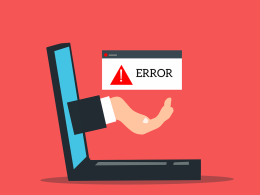Yes, it is possible to get a virus or malware from a PDF file. Although PDFs are generally considered safe, attackers can embed malicious code or exploit vulnerabilities in PDF reader software to execute malicious actions when the file is opened. Here are some ways that PDF files can become infected:
- Embedded scripts: PDF files can contain embedded JavaScript code, which may be used for legitimate purposes, such as form validation or interactivity. However, attackers can also use these scripts to execute malicious actions when the PDF is opened.
- Exploiting vulnerabilities: Malicious PDFs may exploit known vulnerabilities in PDF reader software to execute arbitrary code on the user’s computer. This can lead to the installation of malware or other undesirable consequences.
To protect yourself from PDF-related threats, consider the following tips:
- Keep your PDF reader software up-to-date: Regularly update your PDF reader software to ensure you have the latest security patches, which can help protect against known vulnerabilities.
- Use a reputable PDF reader: Choose a reputable and widely-used PDF reader, such as Adobe Acrobat Reader or Foxit Reader, as these are more likely to receive regular security updates.
- Be cautious with unknown sources: Do not open PDF files from unknown or untrusted sources. If you receive a PDF file via email or download it from a website, ensure that the source is trustworthy before opening the file.
- Use antivirus software: Make sure you have a reputable antivirus program installed on your computer and keep it up-to-date. This can help detect and block malicious PDF files before they can cause harm.
- Disable JavaScript in your PDF reader: If you don’t need JavaScript functionality in your PDF reader, consider disabling it to reduce the risk of malicious scripts executing when you open a PDF file. Most PDF readers allow you to disable JavaScript in their settings or preferences menu.
- Scan downloaded files: Scan downloaded PDF files with your antivirus software before opening them to check for any signs of malware or malicious content.
How Do PDFs Spread Viruses?
Malware can be embedded in a PDF file in several ways, such as hyperlinks, scripts, or attachments. For example, a PDF file may contain a hyperlink that leads to a malicious website or a script that executes malicious code when the file is opened. Additionally, PDF files can contain embedded files, such as images or videos, which may contain malware.
Some PDFs contain viruses designed to change or delete data within a device; hackers use this tactic to take control of your device to steal information or use it for fraudulent purposes. Many viruses from PDFs show up in email downloads or as an attachment because PDFs contain a specific and unique code.
PDFs are often sensitive documents, so people are likelier to open them. When downloading PDFs online, many can contain a virus that infects your device, such as from downloading eBooks or other online files.
How To Defend Yourself from PDF Viruses?:
The best way to defend yourself from a PDF virus is to download files from a trusted source. When downloaded, you can scan the PDF file for a virus with antivirus software before opening it. After opening a PDF online or an attachment, avoid clicking any links from the document. Users should understand phishing attempts or false documents that may contain a PDF file meant to infect their device.
It is also recommended to keep your antivirus software up-to-date and use a PDF reader with built-in security features, such as sandboxing or disabling scripting. If you are unsure about the safety of a PDF file, it is best to err on the side of caution and avoid opening it.
Finally, users should install enterprise-grade cybersecurity on their devices if they accidentally open a malicious PDF file.
Ways Agency Can Protect You:
Agency offers active dark web monitoring, 24/7 active security monitoring & response by U.S. professionals, VPNs, next-gen antivirus/EDR, ID theft coverage, and personal information removal.







